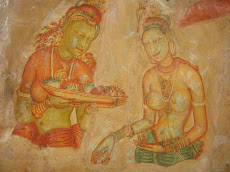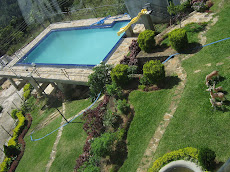Generations of toddy tappers indulged in this very demanding and unforgiving livelihood to feed a few hungry mouths to make ends meet. Ever since toddy drinking was encouraged instead of arrack, many Raa Mudalalis have exploited the poor toddy tapper to enhance their wealth. These tappers are usually the only bread winners for their families. Exploited to the core, they do not own any land. Little has been done to ensure the safety of these brave men.
I had a first hand experience as many of my colleagues who worked in the coconut triangle of Chilaw, Kurunegalle and Negambo dealt with casualties arriving at any time of day, specially, late evenings, following falls from the Athura (the connecting ropes between two coconut trees tied taut to make access easier to the coconut flower to tap the sap from it in to a pot). I am sure many of my colleagues have spent hours of sleepless nights and weary hours operating on acute abdomens with a few litres of blood inside from a bursting spleen or liver or bowel contents. Some present with blood in the thorax, contused lungs and others with a ruptured diaphragm. It is usually not the case for the tapper to be drunk at the time of the fall but some have indulged in alcohol prior to their ascent. Many of these hard working men have alcoholic liver disease given their simple life style and clotting of the blood is delayed as the liver is usually compromised.
The worst scenario is the injury to the spine, spinal cord and head injury. Many are left paralysed for the rest of their lives. A few are salvaged due to the timely intervention of colleagues such as neurosurgeons and orthopaedic surgeons whose services have to be obtained by transfer to the relevant institutes and much investigations like CT and MRI scans. This is an additional expense for the government. The economic and psychological burden on the family following death of the tapper or his long term paralysis cannot be explained by words. One should only talk to such families to know the extent of human suffering. How can we help these unfortunate victims of circumstances?
 I am sure most of the readers of this article have seen the Telecom workers climbing posts to repair or restore power lines. It seems mandatory for these men to ware a harness with a broad padded waist line and a cable with one hook. We can use the same harness but with a slight modification – two lifelines or cables with rings at the end in the form of mountaineering clips. One will be attached to the upper rope behind the tapper whilst the other will be attached to the lower rope of the Athura also from behind. This arrangement will reduce the hassle of pushing the two rings forwards away from the body. The idea is to prevent a fall if one of the ropes snaps. If both ropes snap this would be very unfortunate although quite rare. A helmet could be also an added safety feature.
I am sure most of the readers of this article have seen the Telecom workers climbing posts to repair or restore power lines. It seems mandatory for these men to ware a harness with a broad padded waist line and a cable with one hook. We can use the same harness but with a slight modification – two lifelines or cables with rings at the end in the form of mountaineering clips. One will be attached to the upper rope behind the tapper whilst the other will be attached to the lower rope of the Athura also from behind. This arrangement will reduce the hassle of pushing the two rings forwards away from the body. The idea is to prevent a fall if one of the ropes snaps. If both ropes snap this would be very unfortunate although quite rare. A helmet could be also an added safety feature.
Who pays for the harness and how is the wearing of the harness made mandatory? This is where insurance companies can help or at the time of granting a licence for this business, one of the conditions should be the mandatory availability of harnesses for the tappers. I am sure coconut land owners and those in the industry can well supply and obtain a modified harness from the same source as the telecom workers. In the list of industrial or health hazards, the PHI can enforce the rule to check whether harnesses are available and are being used. Heavy fines can be imposed for a owner of such a business not adhering to the rule. We urge those in the industry to take heed and ensure the safety of the tapper. A perspective study can be undertaken to audit such injuries and their outcomes on health and the economy.
Dr. Keith Chapman




























No comments:
Post a Comment